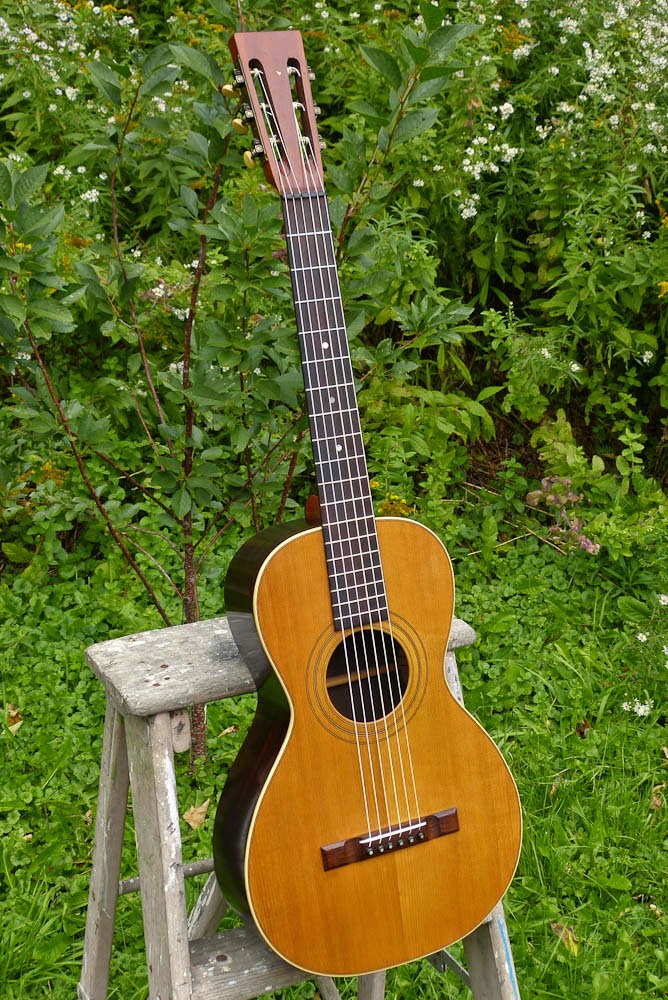c.1905 Weymann Size 2 Gut-strung Parlor Guitar
This is a customer's "size 2" (per Martin specs) gut-strung parlor guitar with a serial that places it in the early 1900s or 1910s at the latest. It's a beautiful thing, finely built (as I'd expect), and it sounds excellent. It's a little more open-sounding than period Washburns, for sure, and feel-wise it's similar to something like a Bay State guitar with a 1 3/4" nut medium-sized v-shaped neck and a radiused fretboard.
Work included a neck reset, fret level/dress, tuner lube, light cleaning, new saddle, and setup. The strings are new Aquila Alabastro nylguts (with their creamier, more gut-like color introduced last year).
The guitar's body is crack-free and has a solid spruce top (ladder braced) with solid maple back and sides. The back/sides have been painted, however, to simulate rosewood. This was pretty typical for the time.
Original ebony nut and non-veneered headstock. This had another gold-foil Weymann decal at some point but it's almost entirely missing, now.
The Brazilian rosewood board is radiused and you can even see the old tooling marks from making that radius on its surface. This reminds me of old Harmony boards which show that tooling but even moreso. The dots are pearl and while the neck had a bit of relief I've dialed it almost perfectly level after leveling and dressing the frets.
The scale length is 24 1/2" which is a 1/2" longer than the typical parlor from this time and provides a nice, more modern feel.
Weymanns, to me, are synonymous with elegant design. Look how clean all that detailing is! There's a 3-ring inlaid rosette as well as a purfled and bound (in celluloid) top edge.
The original rosewood bridge was good to go glue-wise (only the barest edge of a lift on its rear edge) so left it as-is and during setup made a new bone saddle of proper height (the old one is safely stowed in the case).
Isn't that classy?
It's 12" across the lower bout.
I'm pretty sure this is a mahogany neck.
This instrument has a tenon neck joint which makes it susceptible to failing. When regluing this and altering its angle during the reset I also installed a bolted-heel setup with access through the soundhole. With it both glued and bolted, now, the joint feels far more secure.
The tuners lubed up nicely and work just fine. They've got ivoroid buttons.
I should also mention that the guitar is all original save the saddle and endpin.
The original endpin was damaged so I replaced it with this ebony one.
A nice surprise for the owner is this fantastic period arched hard case (a Washburn one I'm told) that I got out of a trade deal recently. It fits the guitar like a glove, which is nice, because cases of this size are impossibly hard to find.
How about that embossing?























Comments